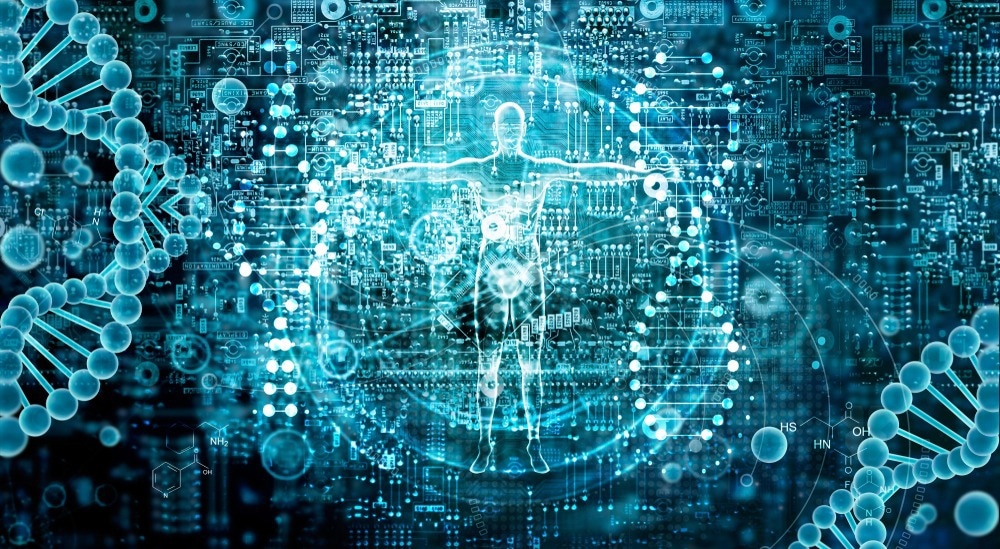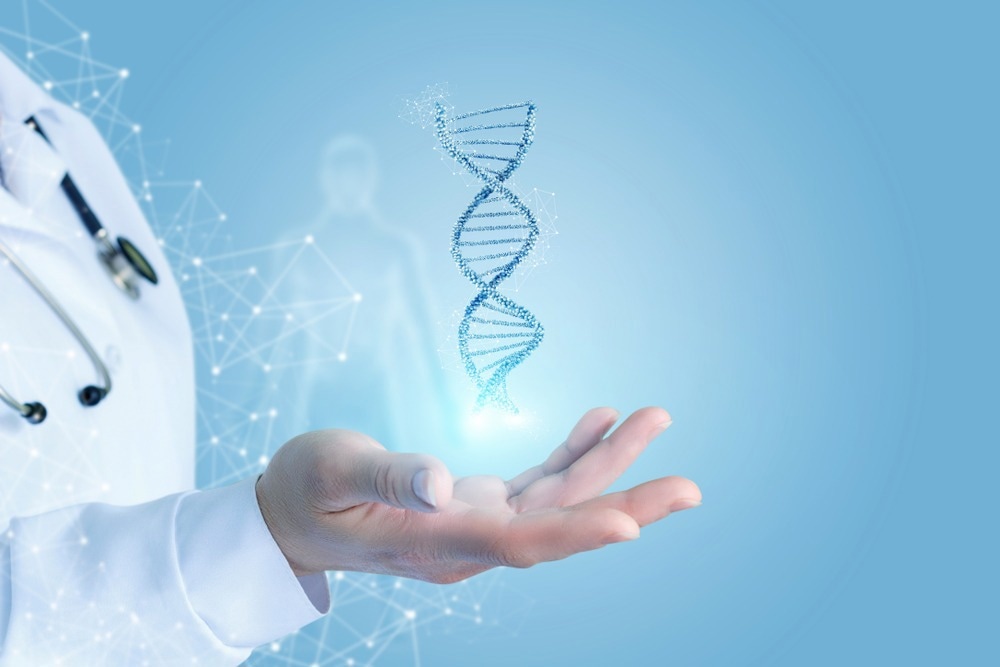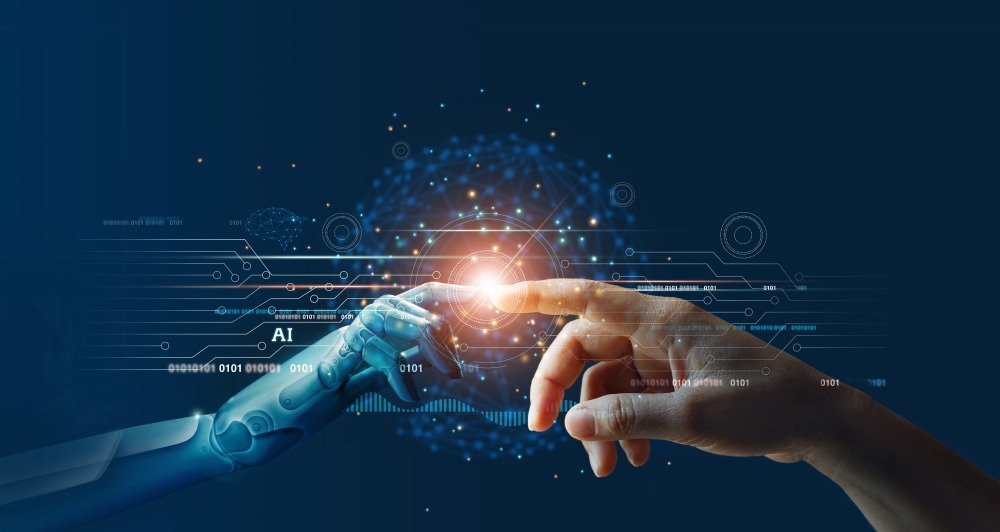The field of science is arguably the world's fastest-evolving sector, as it is the sector that almost all depend on to progress and develop. Innovations and paradigm shifts in the scientific field facilitate the establishment of novel solutions to the most pressing challenges in medicine, energy, transportation, computing, communications, agriculture, food science, and more.
Here, we discuss how the life sciences sector has evolved in the past two decades, summarizing the most influential breakthroughs of this period and highlighting key companies. We also make predictions on how to field will continue to develop throughout the current decade.

Image Credit: PopTika/Shutterstock.com
The evolution of science: 2000–2009
The 2000s was a decade home to numerous significant scientific breakthroughs. The decade can be defined by significant advances in our understanding of genetics as well as the birth of the iPhone, one of the most radical and disruptive innovations in the communications industry.
In 2001, the Human Genome Project published its first draft of the human genome sequence. This data was much eagerly awaited following years of collaboration that brought together more than 20 research centers from across the globe. This first draft revealed more than 90% of the human genome, with the complete genome published just two years later. The breakthrough achieved by the human genome project was not only groundbreaking, but it spurred the development of genetics research. Gene editing techniques, gene therapies, genetic tests, and even forensic processes have emerged due to this achievement.
Also, in 2001, the AbioCor artificial heart was invented by Abiomed. This invention was a breakthrough in medical miniaturization technology, paving the way for the development of similar technologies to follow.
Toyota emerged as a key innovator in 2003 with its Hybrid Car unveiled, which won that year's invention. Toyota was the first company to launch a Hybrid car onto the commercial market, with the Prius in 1997. Six years later, Toyota was cementing its position as an industry leader in the automotive industry, helping lead the much-needed shift the sector needed towards vehicles with smaller carbon footprints. In fact, the push towards greener technology was being felt in all industries at this time and acted as a driver for innovation.
Several years later, in 2007, it was Apple that won the invention of the year for its iPhone. Today, the iPhone is the world's most popular phone; in 2007, the launch of the first iPhone was disruptive within the mobile phone industry. Apple continued to lead the way in terms of innovations in the mobile industry and is widely considered the number one innovative company in the world.
Also, in 2007, stem cells were derived from a source other than embryos for the very first cells. For many years, stem cell research has been controversial with its reliance on human embryos. This controversy was challenging, as the discovery of stem cells stands as one of the most important discoveries of the 21st century. Many opposed the use of embryos in this research, which jeopardized its future. In 2007, scientists successfully used skin cells to derive stem cells, demonstrating a way to circumvent this controversial issue and allow stem cell research to reach its full potential. This innovation allowed for the breakthroughs in stem cell research that have thus followed. Many therapeutics are available or in the pipeline thanks to progress in stem cell research.
Finally, 2008 marked another key milestone in the development of genetics. The beginning of the decade was marked by the publication of the full human genome, and the end of the decade closed with DNA test kits being made commercially available. Inventors 23andMe launched their personal retail DNA testing kit that used saliva to estimate your genetic links to certain hereditary traits, such as vulnerability to chronic diseases. This widespread availability of genetic testing marked a scientific shift whereby cutting-edge scientific technology was no longer restricted to those who understood how it worked and how to analyze results. Since 2008, many more sophisticated technology platforms have been made available to the public. At-home diagnostic tests, for example, are widely available via mail order across the globe.

Image Credit: Natali _ Mis/Shutterstock.com
The evolution of science: 2010–2019
The 2010s brought us breakthroughs in various scientific frontiers. The momentum in the 2000s in genetic research continued to gain speed in the 2000s. Progress was most memorably marked by the development of CRISPR–Cas9 technology, a gene-editing method that was both exciting and controversial. For many years, the possibility of creating genetically edited human children has been hotly debated by ethics committees, and it was the general consensus that no scientist would edit the gene in the germ line should this technology become available.
However, in 2018, it was reported that scientists in China had used CRISPR technology to edit the genes of two baby girls born via in vitro fertilization. It was claimed that the edits had given the babies protection against HIV. The CRISPR-Cas9 debate continues and defines the decade in terms of scientific evolution. We are now at the point where we have the responsibility to make choices regarding the morality of editing the genes of our offspring, something that has been passed down to us since the dawn of time and holds within it the beauty of evolution itself.
Continuing the controversial theme of the evolution of science in the 2010s is the rapid development of artificial intelligence (AI) that occurred throughout this decade. Science fiction movies and novels have long theorized about what a world with advanced AI may look like. Often, imagined futures with highly developed AI are written as dystopias.
The rapidly growing field of AI has commonly encouraged philosophical debates about human consciousness and about whether we will ultimately start being obliged to bestow rights on AI technology similar to human rights.
However, the explosion of AI that happened throughout the 2010s paints a different picture. AI is now widely adopted across industries, but this is most often being used for data collection and real-time analysis to facilitate automation or give humans useful insights. For example, sensor technology has been deployed in agriculture that allows for the automatic management of temperature, humidity, light, etc., helping to grow reliable and bountiful crop yields.
Smartwatches are also an example of AI as they provide feedback and important insights that help us make behavioral changes. AI is also being used in video games and the automation industry. Overall, AI is widely adopted by all industries and has supported the technological shift known as Industry 4.0, the fourth industrial revolution.
DeepMind is one company in particular that stands out in AI. Throughout the 2010s, Google's DeepMind demonstrated its impressive AI; it taught itself to walk, out-strategize humans, navigate without a map, create its own images, and detect diseases with higher accuracy levels than trained medical professionals.

Image Credit: PopTika/Shutterstock.com
What will the next decade bring?
Over the next decade, genetics and AI will likely continue to evoke scientific breakthroughs and possibly paradigm shifts. Overall, science and technology is always led by human need. Currently, the world is striving to tackle climate change, scientific innovation in the coming years will likely be fueled by the need to develop solutions to these challenges, and AI is poised to provide some answers.
Additionally, the pharmaceutical industry is positioned to leverage the developments that have been made in genetics. Innovations will likely occur in this space, with novel therapeutics being developed to treat both common and rare diseases.
Sources:
- Cyranoski, D. and Ledford, H., 2018. Genome-edited baby claim provokes international outcry. Nature, 563(7733), pp.607-608. https://www.nature.com/articles/d41586-018-07545-0
- De Fauw, J., Ledsam, J., Romera-Paredes, B., Nikolov, S., Tomasev, N., Blackwell, S., Askham, H., Glorot, X., O'Donoghue, B., Visentin, D., van den Driessche, G., Lakshminarayanan, B., Meyer, C., Mackinder, F., Bouton, S., Ayoub, K., Chopra, R., King, D., Karthikesalingam, A., Hughes, C., Raine, R., Hughes, J., Sim, D., Egan, C., Tufail, A., Montgomery, H., Hassabis, D., Rees, G., Back, T., Khaw, P., Suleyman, M., Cornebise, J., Keane, P. and Ronneberger, O., 2018. Clinically applicable deep learning for diagnosis and referral in retinal disease. Nature Medicine, 24(9), pp.1342-1350. https://www.nature.com/articles/s41591-018-0107-6
- Dennis Normile. 2019. Chinese scientist who produced genetically altered babies sentenced to 3 years in jail [online]. Science Insider. Available at: www.science.org/.../chinese-scientist-who-produced-genetically-altered-babies-sentenced-3-years-jail (Accessed July 2022)
- Hsu, P., Lander, E. and Zhang, F., 2014. Development and Applications of CRISPR-Cas9 for Genome Engineering. Cell, 157(6), pp.1262-1278. https://www.ncbi.nlm.nih.gov/pmc/articles/PMC4343198/
- Jinek, M., Chylinski, K., Fonfara, I., Hauer, M., Doudna, J. and Charpentier, E., 2012. A Programmable Dual-RNA–Guided DNA Endonuclease in Adaptive Bacterial Immunity. Science, 337(6096), pp.816-821. https://pubmed.ncbi.nlm.nih.gov/22745249/
- Waldrop, M., 2015. Autonomous vehicles: No drivers required. Nature, 518(7537), pp.20-23. https://www.nature.com/articles/518020a